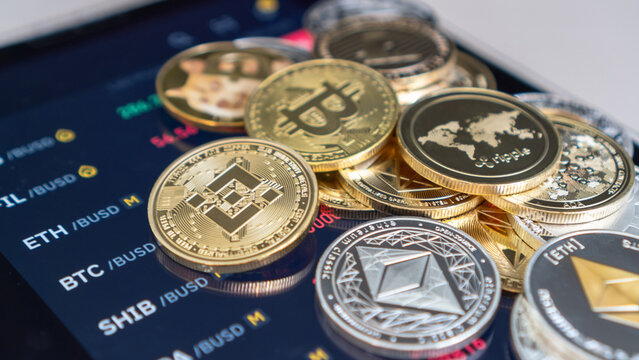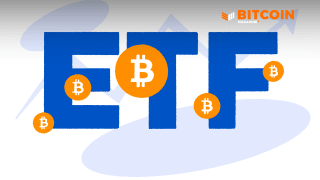
If you’ve acquired some bitcoin, it’s possible you may find yourself wanting to sell. This may be due to a personal change in your financial situation, a desire to get some BTC in the hands of more people or an opportunity to sell at a price increase (in the hopes of buying more bitcoin later, of course).
If you do have some bitcoin you’d like to sell, there are some basics you’ll need to know first. The below does not constitute financial advice, but is instead intended to offer a starting point of fundamental information.
Determining The Best Method To Sell BTC
As with buying bitcoin, there are several methods through which you can sell BTC. Determining the best method to pursue will be an individual calculation based on your specific wants and needs. Bitcoin sellers use exchanges, peer-to-peer methods, bitcoin ATMs and in-person trades to exchange their holdings for fiat or other cryptocurrencies. We cover the basics for each of these popular methods below, which may help you determine how you’d like to sell your bitcoin.
Exchanges
Cryptocurrency exchanges are probably the most popular avenues for selling bitcoin. In essence, they serve as middlemen between BTC buyers and sellers, holding both parties’ funds until a trade is completed.
In order to leverage an exchange, you’ll have to set up an account. This will mean providing some personal identity verification, and connection to a bank account, debit or credit card.
Once your account is established, selling bitcoin should be a relatively simple matter of placing a sell offer with the amount you wish to sell and the price for which you would like to sell it (per satoshi or fraction of a bitcoin, most likely). If and when someone accepts your sell offer, the exchange should facilitate an automatic transfer of funds. These funds then become available for withdrawal from your account.
Cryptocurrency exchanges rarely charge a significant transaction fee for facilitating these sales, but will probably charge a higher withdrawal fee when you’re ready to withdraw your funds to your bank account, credit card or debit card (more on withdrawing USD after selling bitcoin below).
As always, users should keep in mind that bitcoin exchanges have a long history of mismanagement and hacks. Though they have become more secure as the Bitcoin ecosystem evolves, it is never recommended that users keep their bitcoin on exchanges. If you are using an exchange to facilitate bitcoin sales, you should do your best to store any bitcoin that is not immediately needed for transaction through a secure, offline wallet that you control.
Online Marketplaces
There are also online platforms that matchmake between those who want to buy bitcoin and those who want to exchange bitcoin for goods or services from retailers that do not directly accept BTC.
In general, these websites allow a bitcoin holder to post a wish list of items and a potential discount they’d like to receive on their normal price. A prospective bitcoin buyer can then pay for those items with a debit or credit card in exchange for an agreed upon amount of BTC from the holder. The platform facilitates this transfer, which ultimately requires only a bank card used to purchase items from a traditional retailer, and likely collects a fee for the service.
These platforms are P2P in the sense that the transactions are between two peers who find each other online, though a third-party platform does typically collect fees and facilitate transactions.
Bitcoin ATMs
Bitcoin ATMs are real-world kiosks that allow users to purchase and, sometimes, sell bitcoin in person. Generally, these machines accept fiat cash in exchange for a printed QR-code or direct bitcoin transfer to a user’s wallets (in exchange for transaction fees).
But a few Bitcoin ATMs also offer bitcoin sales services. However, these machines may require rigorous personal identification efforts that can include a telephone number, proof of government-issued identification, current photo from the kiosk’s webcam and more.
For those who do choose Bitcoin ATMs as a method for selling bitcoin, they will likely be provided with a printed QR code that contains a bitcoin address to send your bitcoin. You may then receive cash from the machine or you will receive a redemption code that will allow you to access funds once the bitcoin transaction is confirmed.
P2P And In Person
In-person bitcoin sales are often preferred by many in the space because they do not inherently require personal identifying information or any third party that collects data or fees. Selling bitcoin in person can be as easy as meeting with someone and scanning a QR code on your phone to transfer bitcoin to their wallet in exchange for cash or an in-kind cryptocurrency transfer on the spot.
There are platforms, like LocalBitcoins, that help facilitate in-person bitcoin sales, matching buyers with sellers and sharing a rating system regarding the trustworthiness of users. If you’re going to sell bitcoin in person, you’ll probably want to negotiate a price before meeting with the buyer. This price may be based on the bitcoin prices listed on popular exchanges and may also include an extra fee.
BTC to USD: How to Sell Bitcoin for the U.S. Dollar
Most of the above methods, such as use of a BTC exchange or in-person sales, can be used to sell bitcoin for USD or other fiat currencies. When using an exchange, bitcoin sellers will have to connect a bank account or bank card in order to withdraw any USD they collect. When selling bitcoin in person, they should be able to pocket USD as cash directly. Bitcoin ATMs may furnish USD as cash directly or may transfer USD digitally into a bank account or bank card.
How to Withdraw USD After Selling Bitcoin
After selling bitcoin on an exchange for USD, you will have to take a few more steps before you are fully cleared to withdraw and use these funds. Following a bitcoin sale, an exchange will credit your account with the resulting fiat equivalent. You will then need to withdraw them to your connected bank account, which may take a few days depending on the available liquidity of the exchange you are using. This will also likely incur a withdrawal fee, which can vary between exchanges.
Cryptocurrency exchanges also limit the amount of funds you are allowed to store in your account, so you may be required to withdraw USD funds you’ve accrued from selling bitcoin.
BTC to Crypto: How to Sell Bitcoin for Cryptocurrency
Cryptocurrency exchanges also let users trade their bitcoin for other cryptocurrencies. Many exchanges host trading sections, which list cryptocurrency pairs and let users select a pair, type in the amount of BTC they want to sell, review the details of the proposed transaction and then execute it.
Just as you might negotiate an in-person sale of bitcoin in exchange for cash, you could negotiate an in-person trade of bitcoin for another cryptocurrency in which you transfer your bitcoin in person to someone who then transfers the agreed upon amount of the alternative cryptocurrency to you.
In a more roundabout way, you could sell your bitcoin using one of the above methods for fiat and then use those funds to purchase an alternative cryptocurrency on an exchange, in person, through a Cryptocurrency ATM or via another method.









